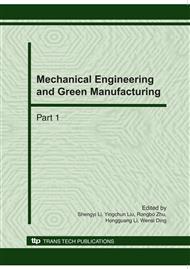p.1388
p.1393
p.1397
p.1402
p.1406
p.1415
p.1421
p.1425
p.1431
Fracture Test and Analysis of Notched Bars Fabricated from Q235 Steel at Room Temperature
Abstract:
Tensile tests at room temperature were performed on 20 notched bars fabricated from constructional steel Q235 specified in Chinese National Standards. The effect of the notch radius, r, and that of the notch depth ratio, d/D, on the fracture model of the constructional steel is examined. The experimental results demonstrate that cracks initiate at the notched section. Specimens with a sharper notch radius (a smaller r) and a larger notch depth (a smaller d/D ratio) show poor ductility, but high fracture strength. The experimental data are further analyzed using an elliptical yield model together with an elliptical fracture model originally proposed by the first author. The stress field computed from the numerical procedure indicates that the crack initiation occurs at the center of the notched section which experiences the highest stress triaxiality ratio (óm/óseq). As the stresses at the notched section reach the limiting values determined from the elliptical fracture model, macroscopic fracture failure in the notched bar occurs.
Info:
Periodical:
Pages:
1406-1414
Citation:
Online since:
October 2010
Authors:
Price:
Сopyright:
© 2010 Trans Tech Publications Ltd. All Rights Reserved
Share:
Citation:


